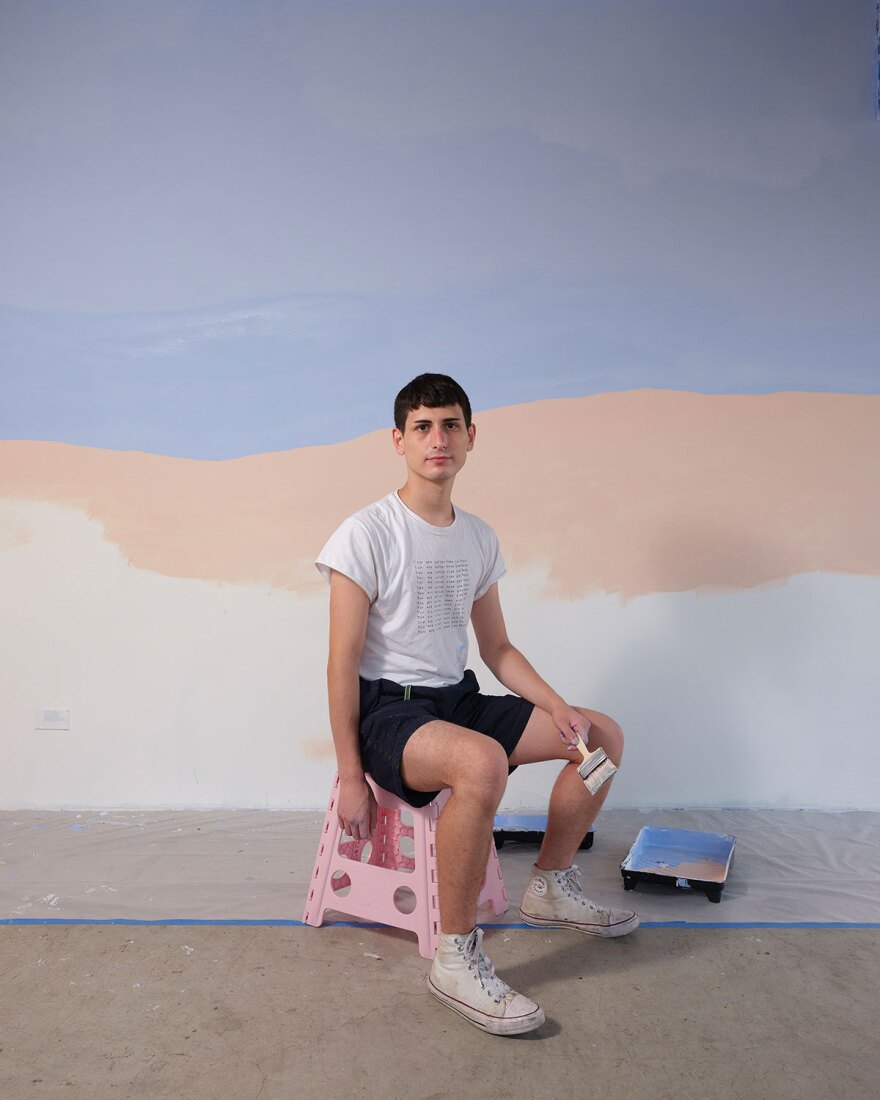The first two pages of writer, poet and artist Andrés Hernández's recent graphic novel, "we used to move through the city like doves in the wind," feature the familiar loops of barbed wire along a fence with the words "March 2020. Tijuana, B.C."
We know where this is going: the pandemic. On March 20, 2020, the U.S.-Mexico border closed due to COVID-19 and would remain closed until earlier this month.
RELATED: Long waits, bureaucratic hassles loom as border set to reopen
The book is about Hernández's own experience with her partner, both stuck on opposite sides of the border: Hernández in Tijuana, and her partner Neville in San Diego. More than a pandemic story, it's a love story, about devotion as much as it is loneliness and separation, as well as the inequality of the border closure.
"During the first three months, we had no idea U.S. citizens were allowed to cross," Hernández said from her house in Tijuana last week.
"How do you explain to someone, well the border is closed but also some people are affected by it — a lot of people are affected by it — but a lot of other people in Tijuana are not," Hernández said. "But for people like me who have Mexican citizenship and have friends or family over there or even like myself, a partner over there, it was really devastating."

"It was an earth shattering feeling to not be able to cross anymore. I still have some residues of separation anxiety," Hernández said. "I'm sure the first time that I cross that border is going to be terrifying."
Part of the book is set in San Diego in August 2020, from the perspective of Hernández's partner Neville, who is Black. Adapted from text messages sent to Hernández, the Neville section is enshrouded in a deeply exhausted sadness due to racism, police brutality and the violence and inequality Neville endures each day — on top of being separated from Hernández.
"Still, we keep on giving, and they keep on taking, and they love what they take. / They love everything about it, except for the fact that it belongs to us. / It feels like mourning a part of yourself that is lost almost every day. / And my body is tired of experiencing the same kind of sadness over and over. / We used to move through the city like doves in the wind / and graced with our light every single part of it."From "we used to move through the city like doves in the wind" by Andrés Hernández.
During the pandemic, Hernández submitted the idea as a zine to the Women's Studio Workshop in New York, but after it was accepted, she quickly realized it needed to be more than a zine — "doves" would become the nonbinary artist's first graphic novel.
It's a specific, personal book in a still-small package — just 5.5 inches square — but the breadth of the subject matter is huge. "It was pretty challenging to put it into such a small number of pages," Hernández said.
The illustrations are simple but entirely captivating, with a style that evokes a softness of watercolor and a zine-like grain and layered but muted coloring of risograph printing.

Hernández began drawing and writing as a child — partly as a way to process things she didn't like. "Whenever something sad would happen to me, I would draw it. When my grandmother's dog died, I drew it in angel form," she said. "If I wanted to see a movie end differently, I would change the ending."
Slowly, this transitioned to writing, which seemed like a potential future in a way that visual art did not. Hernández wrote fiction voraciously in her early teens, while her parents suggested she focus on a career instead.
"[The stories] were never about me, but looking back now, they are clearly about what I was going through. Usually I would write about artists not being able to be artists or artists being limited in some way," Hernández said.
Her work now is ultimately grounded in truth and vulnerability — something that shines in the intimacy of the graphic novel.
"For me, the art that I want to see out there is art that takes common everyday conversations or events of the everyday life, and they find meaning in that, and it doesn't have to be something extraordinary, it doesn't have to be something big," Hernández said.

Hernández will open a solo exhibition in early 2022 at The Hill Street Country Club in Oceanside — featuring recent photography and some collage work, all based on a several-month period when she was able to come to San Diego in the middle of the pandemic (not, incidentally, by crossing the San Diego-Tijuana border; she flew from La Paz to Los Angeles).
The exhibition, currently named "We’ll be together by spring / en el cañón de los laureles," is informed by the landscapes surrounding the border and their juxtapositions and collisions. The border wall, the fields and estuary, even the highway bridges in the U.S. as soon as you drive across the border form the visual makeup of the two cities for Hernández.
"These things exist in a separate environment, but they're not impossible, it's not impossible for them to be together," Hernández said.






